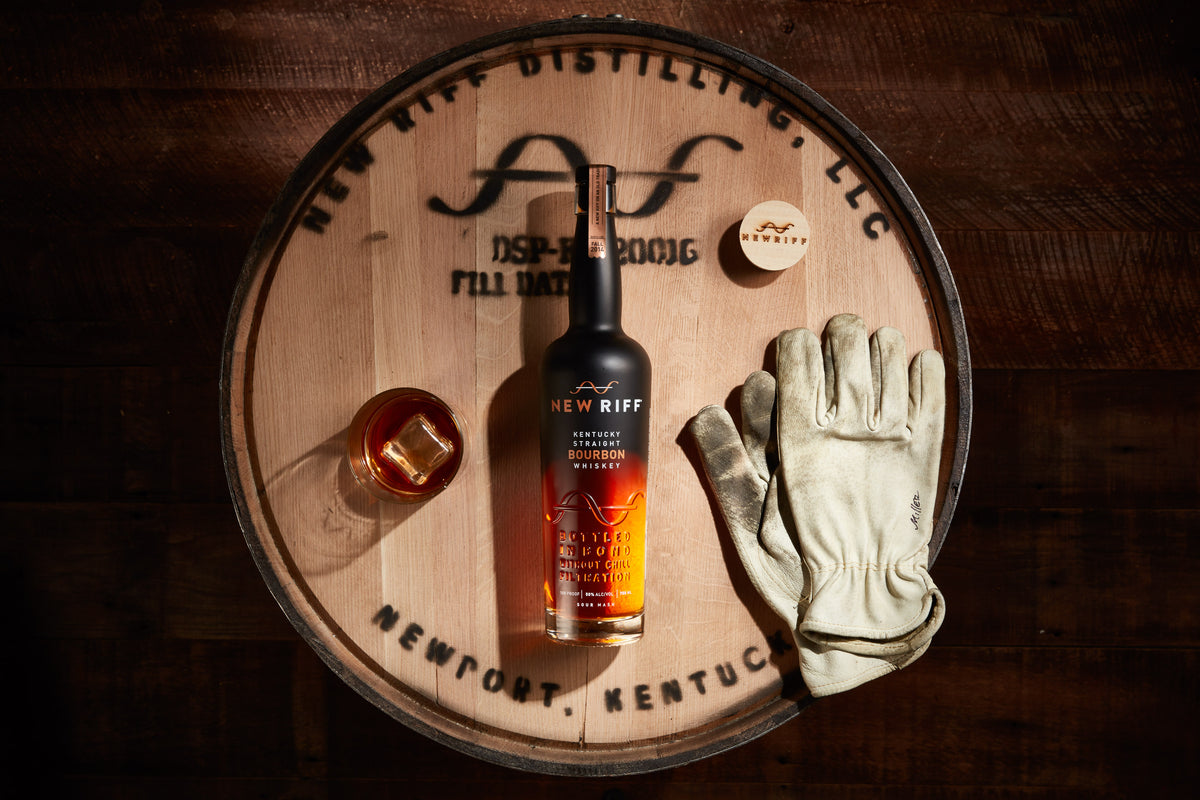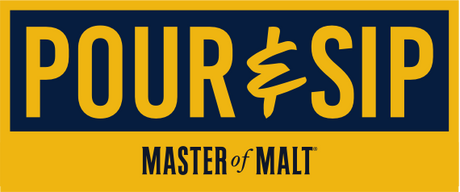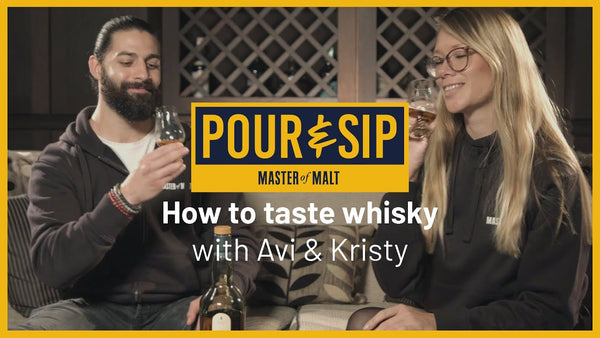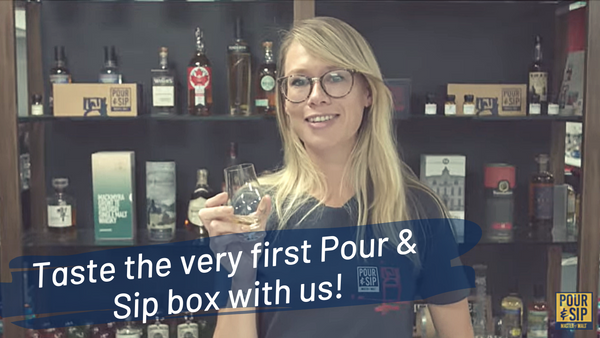Talking all things New Riff with co-founder Jay Erisman

Thanks to the power of the internet, I was lucky enough to chat with New Riff co-founder Jay Erisman, all the way from Kentucky. Why not eavesdrop on our discussions about Bottled in Bond, whiskey cocktails, and the shocking fact that the distillery uses more rye than corn, while you sip on the bourbon?
Pour & Sip: Hi, Jay! Talk us through what led to New Riff being created in 2014?
Jay Erisman: The founder and owner of New Riff, Ken Lewis and myself used to run an exceptionally large liquor store. You could park several big jet airplanes inside if you wanted. It’s called The Party Source, and was located in northern Kentucky. I was working there from 2001 as the fine spirits manager, and we had an opportunity to work very closely with a lot of Kentucky’s great bourbon distilleries. It just blossomed into the ridiculous notion that we should do this ourselves and make our own. Ken said "let’s do it", and we did. So in the parking lot of The Party Source is a beautiful distillery building. What we wanted to do in building New Riff was make great whiskey, and to that end we needed to be independent. We’re owned by one person; there are no investors, no venture capital, it’s not going public, it’s not getting sold. I joke sometimes that if Ken is running this company with the idea that he’d someday sell it, he’s doing a terrible job! So we are an independent family-owned distillery and aim to stay that way.
P&S: Obviously Kentucky and distilling are synonymous – is it a benefit or a curse being based somewhere with such a rich distilling history?
JE: Very much a benefit! We’re located in Greater Cincinnati, Ohio, across the river in Northern Kentucky. We’re at the very, very top of Kentucky. You couldn’t go any further north in Kentucky with a distillery unless you put it on a boat in the river. I suppose we could have built the place in Ohio, but of course we would build a distillery in Kentucky. Maybe it would have been more difficult if we wanted to somehow not make whiskey. The bourbon industry has a tradition of considerable collegiality and friendliness. And we got a lot of help, a lot of resources locally from the wider industry. Everybody helps everybody out. It’s a great community to be a part of.
P&S: Can you talk us through your wonderful Kentucky Straight Bourbon?
JE: So this is our flagship bourbon. It is sour mash whiskey, and Bottled in Bond without chill filtration. Everything at New Riff is non-chill filtered, even our gin. Everything we make at New Riff – except for Single Barrel – is Bottled in Bond.
P&S: Can you explain to us what it means to be Bottled in Bond, and why you chose to go down that path for your whiskey?
JE: This descends from the 1897 Bottled in Bond Act, passed in the USA. It was maybe the first example, at least in America, of product protection legislation. Prior to that, whiskey was not really defined. There was a tremendous amount of people making what today would be called blended whiskey, and back then they were called ‘rectifiers’. They might take Kentucky bourbon and blend it with grain alcohol and flavour it and colour it with all sorts of horrible things. The Kentucky distillers were outraged by this and eventually got the Bottled in Bond Act in order, and that put some protections around the product. There are a number of precepts that go into Bottled in Bond. It has to be at least four years old; it has to be 100 proof [50% ABV] – not at least, but 100 proof only. It has to be distilled in one distilling season, and the seasons run from January to June and July to December. You have to disclose who made it, who distilled it, and who bottled it – in our case that’s the same place. It’s a means of presenting to the consumer that this is the genuine article, and is to this day the highest standard in the world for quality in a brown spirit. Nothing can be added to a Bottled in Bond product except water to bring it to 100 proof [50% ABV]. And we don’t even chill filter it! We have taken ‘bottled in bond’ and raised it to an even higher level of quality by insisting on no chill filtration. We didn’t plan on day one to be Bottled in Bond, but if this really is the world’s highest standard, how can we not bottle everything as Bottled in Bond?
P&S: Let’s talk mash bills!
JE: We’re very proud to share our mash bill with people – it’s fun to share with consumers what you do and why you do it. We have an identity at New Riff to be rye-centric. We wanted to make bold, spicy, intense rye, and one of the great ways to do that is to make high- rye bourbons. Our mash bill is 65% corn, 30% rye, 5% malted barley. We also knew that we would make a lot of rye whiskey, and so our rye mash bill is 95% rye and 5% malted rye, so we call it 100% rye. Interestingly, between these two whiskies, on an annual basis, we consume about 25% more rye grain than corn. An astonishing fact – I don’t think that someone has ever used more rye than corn before in Kentucky’s history, because bourbon of course is a corn-based whiskey!
P&S: What drew you to the spicier side of bourbon?
JE: We really admired the high-rye approach that was born in the 2000s. That is really the time when those whiskies came onto the scene. High-rye whiskies were relatively rare before 2004. It was no longer about ‘bourbon is made with about 15% rye unless it’s a wheated bourbon’; now you had the option of even much spicier whiskies. The American palate has shifted a tremendous amount. IPAs, right? When I was a kid you had to homebrew something if you wanted an IPA, there was not IPA on every corner. And spicy food – we eat more salsa in America than ketchup. Our nation’s palate has shifted, and the whiskey palate shifted along with that. We love these big, intense flavours, so we jumped on the high-rye bandwagon as well.
P&S: While sour mash is very common, it’s also quite mysterious – could you explain what it is for us?
JE: The traditional still used for Kentucky sour mash whiskey-making is very different from the pot stills of Scotland. There’s a broader, overarching concept that we think of when we talk about sour mash. It’s not only sour mash, it’s what we call the Kentucky whiskey making regime. Sour mash is a big part of it. We have a tall column still – you have column stills also in Scotland that make grain whiskey, but our column still is a little bit different. It processes the whole grain. We grind up the grains, we cook them, but they are ground up, there are solids in there. The solids and everything go through our column still – we call it a beer still. They don’t quite have the same kind of beer still in Scotland. To make a long story short, a residue goes out the bottom of the still while the alcohol vapour is going out the top of the still. We collect a portion of it, and it is sour because it has dropped in pH. It is full of all these dead yeast cells, and it’s also full of all those corn solids. We strain some of that out, and that is called sour mash. It’s also called ‘backset’ because in the parlance of the old Kentucky distillers we have set back a portion of the stillage, so we call it back set, of course! Sometimes people liken it to a sourdough bread starter, but that’s not really accurate. A sourdough bread starter is microbiologically active, whereas our backset has been boiled to death. That’s the mysterious part about sour mash – it gets to a point where even the most seasoned of Kentucky master distillers say ‘I’m not sure, we just know from tradition that it makes better whiskey’. There are other things it does, like saving a tiny bit of energy because you’re adding this hot liquid back into the cooker, and it saves a little bit of water. But backsetting with sour mash is kind of unique to Kentucky. We think that sour mash whiskey-making is every bit as good of a way to capture the flavour of a grain, which is ultimately what you’re doing when you’re making whiskey. It is our unique tradition and contribution to the world of whiskey-making and we wanted to stand on that. Everything we make is sour mash.
P&S: Let’s talk about the water you use, because it’s practically half of your whiskey!
JE: One of the two most serendipitous things about starting New Riff was the water supply. Kentucky is famously full of limestone water, and it’s promoted by the bourbon distillers as the foundation of our great industry. Almost nobody uses a natural water source anymore – you can’t run a giant whiskey distillery on a stream. We knew we could make perfectly good bourbon on the city water, but we wanted to find something better if we could. It turned out all along there was an aquifer underneath where we were building the distillery! What’s more, the aquifer is fed by limestone deposits. We are ringed by hills around Northern Kentucky which are full of limestone, and their groundwater goes down into our aquifer. The water source has got about four times the minerality of the typical tap waters of the region. Our water tastes big, it’s a very watery water. You taste it, like ‘damn! That’s some water!’. You can’t run a big bourbon distillery on a small water source, but you can run a distillery the size of New Riff. That’s one advantage to being small.
P&S: How did you come up with the name, New Riff?
JE: We imagine the distiller as a musician. The distiller is making their stuff every day and learning how to play their instrument, but they do a little riff on it, they change something a little bit. So we’re a new riff on an old tradition. One riff is the fact that we have taken Bottled in Bond – one of the most hallowed of all American whiskey traditions – and lifted it to a new level by being un-chill filtered. But we are also highly experimental. We’re not here to jump on a bandwagon. We make relatively traditional stuff, we’re not doing crazy, punk rock new things. When we make a whiskey, we want it to really stick. So we haven’t done finishes and things like that yet. We might do someday. I would like to.
P&S: Is there a favourite that you have from the range?
JE: I guess my favourite, sentimentally, is the Bottled in Bond straight flagship bourbon. Or the rye – but I love that we have been able to execute a platform of quality that stands on the shoulders of giants. That over 100 years ago, to this day, it’s the highest standard in the world. That means a lot to me and I’m pleased that we could pull that off.
P&S: What’s your favourite way to drink your whiskey?
JE: I drink our whiskey straight. I don’t add ice. I always add water. I’ve been telling people for twenty years, ‘drink your whiskey any way you want, just buy it from me!’. You want to put ice in it? Knock yourself out, just make sure it’s our whiskey! Water opens it up, releases additional flavours. So I try to impart to people to add water and explore the whiskey that way. Not a lot of water, just a little bit. Our whiskey makes great cocktails. Being 100 proof and unfiltered, texturally it makes a big contribution to a cocktail. It does great with all the classics, but one I really enjoy with our rye – a cocktail that gets a little bit sneered at sometimes around the rest of the country, like we only make it at the Kentucky Derby race – is the Mint Julep.
Thanks so much to Jay for chatting with me, it was a total joy. That’s it from me this month – I’ll see you in February for more whisky fun!
Jess 🥃



